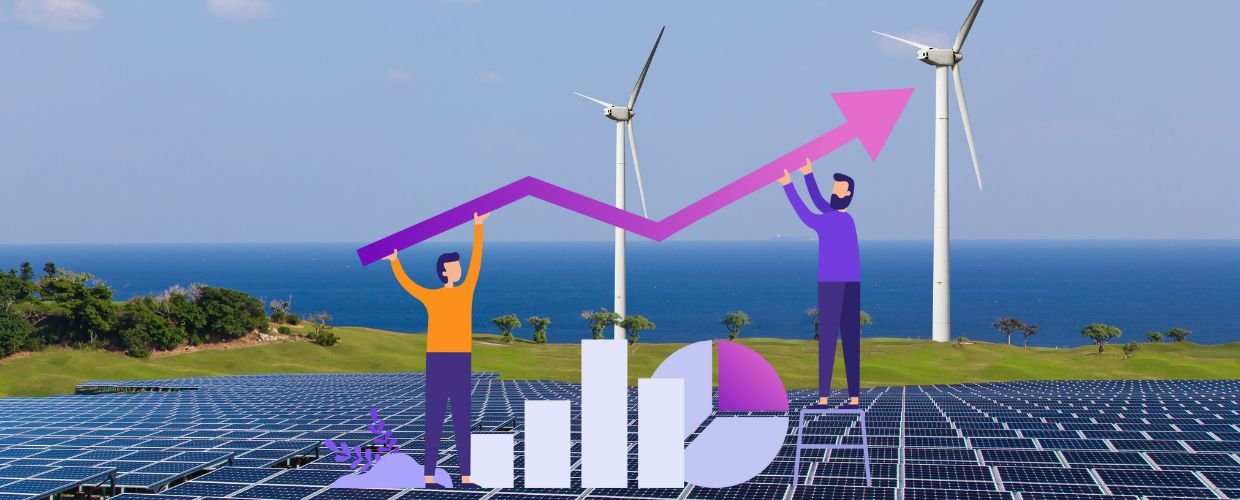In the era of rapid technological advancement and growing concerns about climate change, the ability to accurately predict energy consumption and production has emerged as a critical tool in the quest for a sustainable and resilient energy landscape. Energy forecasting, a sophisticated blend of data analytics, computational modeling, and machine learning, can revolutionize how we plan, manage, and optimize our energy resources. As we navigate the complexities of a changing world, energy forecasting stands as a guiding light, illuminating the path toward informed decision-making and a more sustainable future.
Anticipating Energy Trends: The Power of Energy Forecasting
At its core, energy forecasting involves predicting future energy consumption, production, and distribution based on historical data, market trends, weather patterns, and other relevant factors. Whether it’s electricity demand, renewable energy generation, or fuel consumption, accurate energy forecasting empowers policymakers, utility providers, industries, and consumers to make informed decisions that drive efficiency, resilience, and cost savings.
Energy forecasting plays a vital role in energy transition scenarios, enabling the integration of renewable energy sources, optimizing energy storage systems, and mitigating the impacts of supply and demand fluctuations.
Driving Energy Transition: Renewable Integration and Grid Management
Renewable energy sources, such as solar and wind, are characterized by their variability, making accurate forecasting a crucial component of their successful integration into the energy mix. Its tools enable grid operators to predict when and how much renewable energy will be generated, effectively balancing supply and demand. It ensures a stable power supply, decreases reliance on fossil fuels, and minimizes carbon emissions.
Additionally, energy forecasting supports managing energy storage systems, such as batteries and pumped hydro storage. By accurately predicting energy demand patterns, these systems can be charged during periods of low demand and discharged during peak consumption times, contributing to grid stability and reducing costs.
Empowering Decision-Makers: From Industry to Government
Energy forecasting provides decision-makers invaluable insights that drive efficient resource allocation, infrastructure planning, and policy formulation. Based on accurate energy demand forecasts, industries can optimize production schedules, allocate resources efficiently, and manage energy costs more effectively. Government agencies can develop targeted policies and incentives that promote energy efficiency and renewable energy adoption, aligning with broader sustainability goals.
Moreover, consumers can make informed choices about energy consumption patterns, optimizing their energy use to reduce bills and minimize environmental impact. From large-scale industrial operations to individual households, energy forecasting empowers stakeholders across the spectrum to contribute to a more sustainable energy future.
Enhancing Grid Resilience: Navigating Uncertainty
The energy landscape is characterized by myriad uncertainties—weather fluctuations, market dynamics, technological advancements, and geopolitical factors all play a role in shaping energy trends. Energy forecasting acts as a compass, helping grid operators and energy providers navigate these uncertainties and plan for various scenarios.
For instance, during extreme weather events, accurate energy forecasting helps utilities anticipate spikes in demand for heating or cooling and deploy additional resources as needed. Similarly, unforeseen disruptions in energy supply can be mitigated through proactive planning, ensuring that critical services remain operational.
Challenges and the Technological Frontier: Advancing Energy Forecasting
While energy forecasting has made significant strides, challenges persist in pursuing accurate and reliable predictions. Incorporating various variables, such as economic indicators, policy changes, and societal trends, requires sophisticated data analytics and machine learning algorithms. Ensuring data quality and accessibility and managing the computational complexities are ongoing challenges that demand innovative solutions.
However, the rapid advancement of technology is opening new frontiers in energy forecasting. Artificial intelligence (AI) and machine learning algorithms are increasingly being employed to enhance the accuracy and granularity of predictions. These technologies can analyze vast datasets, identify intricate patterns, and adapt to changing conditions in real time, revolutionizing the field of energy forecasting.
Collaboration and Future Visions: Shaping a Sustainable Energy Landscape
The future of energy forecasting lies in collaboration—between researchers, policymakers, industries, and communities. Combining expertise from diverse fields, such as data science, meteorology, economics, and energy engineering, will yield more comprehensive and accurate forecasts.
Furthermore, energy forecasting contributes to the democratization of energy information. Open data initiatives and user-friendly interfaces enable communities and individuals to access real-time energy consumption data, empowering them to make conscious energy use and conservation decisions.
Conclusion
Energy forecasting is not just a tool—it’s a beacon of light that guides us towards a more sustainable and resilient energy future. As we navigate the complex interplay of technological advancement, environmental considerations, and economic factors, the ability to anticipate energy trends becomes more crucial than ever.
In pursuing a cleaner, more efficient, and sustainable energy landscape, energy forecasting is a strategic asset. It equips us with the knowledge and insights needed to make informed decisions, optimize resource allocation, and prepare for a world in constant flux.
As the world grapples with the imperatives of climate change and energy security, energy forecasting is a testament to human innovation and adaptability. By harnessing its power, we illuminate the path forward—a path toward a future where energy consumption is optimized, resources are conserved, and our world is powered by the light of informed decision-making.










